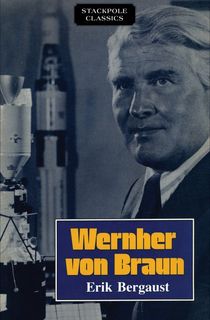By 1945, the war in Europe was drawing to a close. German Field-Marshal Wilhelm Keitel would sign documents of unconditional surrender on May 8 of that year. However, the war in the Pacific was still raging, and as Allied soldiers advanced into Germany, they found themselves in possession of an unusual asset: German scientists who had helped to advance the regime’s wartime technology.
These scientists were considered strategically valuable, and America wanted to harness their knowledge not just to help bring victory in the Pacific but also to bolster postwar scientific research and prevent the scientists from emigrating to countries that had remained neutral during the war, or to areas now controlled by Soviet forces. Hence, Operation Paperclip was born.
What was Operation Paperclip?
President Harry S. Truman officially approved what was actually called Project Paperclip in a secret directive which circulated in 1946. This directive described the “interim exploitation of selected German and Austrian specialists in the United States.” Specifically, Project Paperclip was after scientists, especially those who had worked on aircraft, rockets, and missiles.
“Its official objective,” according to National Air and Space Museum, “was to bring these experts to the United States for six months to a year to help America in the war against Japan.” However, by the time Paperclip officially began, that war had already ended following the United States deploying two atomic bombs against Hiroshima and Nagasaki. “So, what began as a short-term advisory project quickly evolved into a program of permanent immigration.”
The ultimate goal of Project Paperclip was to strengthen the postwar technological boom that the United States was already enjoying and ensure that these strategic minds were not lost to potential rival nations. Though the Cold War had yet to truly begin, the tensions which would lead to it were already in place. Much of the early project focused on pulling German and Austrian scientists from regions that would soon fall under control of Soviet forces.

A group of Nazi scientists after surrendering. Werner von Braun stands center, holding his arm in a cast aloft.
Photo Credit: Wikimedia CommonsHow did Operation Paperclip get started?
“Many of Project Paperclip’s scientists and engineers had Nazi records, which were seen as an inconvenient problem by the project’s administrators,” according to the National Air and Space Museum. The simple truth is that roughly half of the specialists brought into the United States during the early part of Project Paperclip had been members of the Nazi Party, a few of them leaders of the party or members of the SS or SA with extensive party records.
Among these was Dr. Wernher von Braun, a former SS officer who was “at least tangentially involved in the murderous exploitation of concentration-camp prisoners in missile production.” When Von Braun was brought to the United States as part of Project Paperclip, that information was kept classified, and Von Braun and his associates went on to play a pivotal role in the Space Race, helping to launch the first U.S. satellite and contributing to the development of the Saturn rockets that helped put Americans on the Moon in 1969.
“The rapid deterioration of relations with the Communist-run Soviet Union, which by 1948 led to a Cold War that threatened to turn hot, made the immigration of ex-Nazis more palatable to the American government and public,” writes the National Air and Space Museum. “It became easier to sweep their past under the rug. The argument was that we needed them for our weapons programs or, at the very least, we needed to deny their knowledge and talents to the Soviets.
Despite these justifications, the treatment of former Nazis, some of them high-ranking members of the party, has rankled many both at the time and in the years since, and Project Paperclip and its successors remain controversial to this day. To give just one example, the Space Medicine Association had an award named for Paperclip alum Hubertus Strughold, the “father of space medicine,” from 1963 until 2013. It was only after the Wall Street Journal published an expose of Strughold’s connection to human experimentation during World War II that the award was retired.
All told, Project Paperclip helped bring over more than 1,600 scientists and technicians, along with their families, repatriating many of them in the United States. It was also only one of many such projects which sought to take advantage of brain trusts and technological advances made by the German forces during the war. The total value of the contributions made by Paperclip scientists has been estimated at over $10 billion in patents and industrial processes, while Paperclip alumni have received some of the highest awards in the land and played instrumental roles in a number of major industries and technological sectors.

